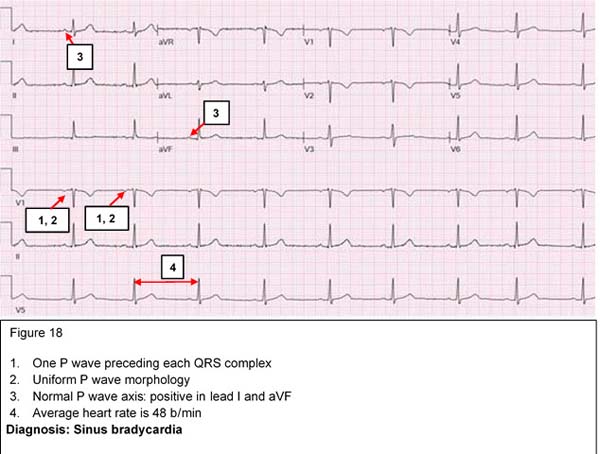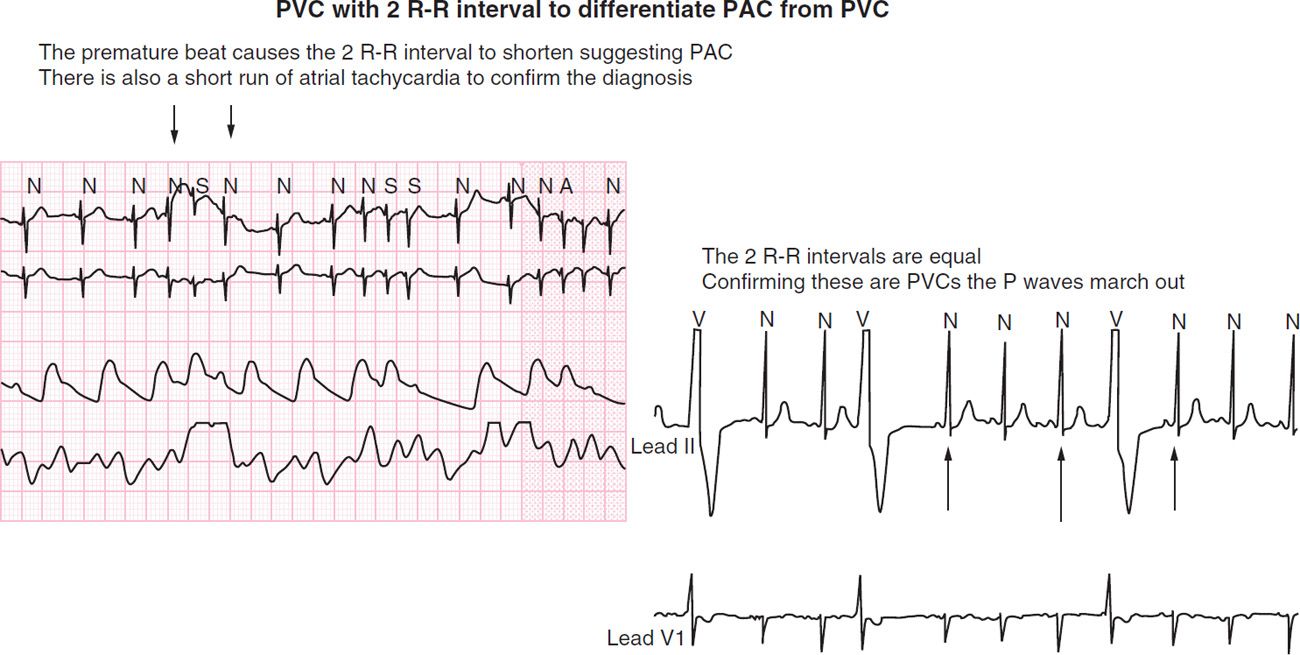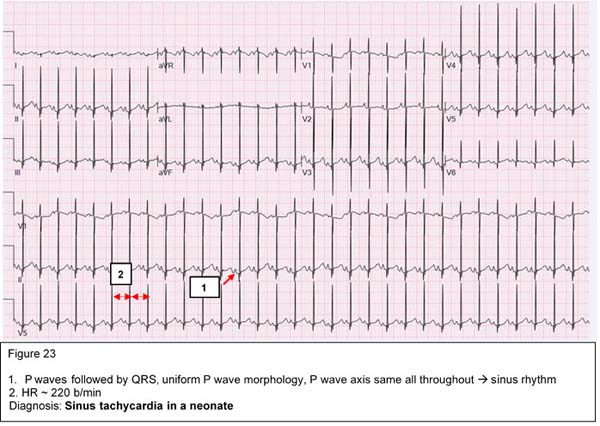[10000ダウンロード済み√] sinus tachycardia with pac ecg 330915-How to tell the difference between atrial tachycardia and sinus tachycardia
Jul 17, 13 · Sinus Tachycardia in a Child A sixyearold girl was found with her two younger siblings and her mother, unconscious, in a room filled with carbon monoxide The mother had been using a charcoal grill inside the house She managed to call 911 before losing consciousness, and the fire rescue paramedics broke into their house, saving themSep , 16 · This ECG also has an interesting rhythm The first beat appears normal, the second beat is a PAC The third beat appears to arise from a different focus, which would make it an escape beat, but it is very difficult to determine this due to the very tiny P waves After a pause, a regular sinus rhythm resumesNov 15, 17 · An electrocardiogram (ECG) can be used to measure the electrical activity of your heart and diagnose sinus tachycardia or any underlying issues In most cases, sinus tachycardia does not require specific treatment, but there are times when an underlying medical condition causing the fast heart rate needs to be treated

Arrhythmias
How to tell the difference between atrial tachycardia and sinus tachycardia
How to tell the difference between atrial tachycardia and sinus tachycardia-Jul , · Cases by Type Select Type 21 AV Block 15 ECG Competition 15 ECG Competition Part II 16 ECG Competition 17 ECG Competition Part II 18 ECG Competition Part II 19 ECG Competition ECG Competition 5 Step Approach 5FU aberrancy Accelerated idioventricular rhythm Acidosis ACS ACS mimics ACS RIsk Factors Acute Pericarditis AdvancedJan 02, 18 · Sinus tachycardia refers to a fasterthanusual heart rhythm Your heart has a natural pacemaker called the sinus node, which generates electrical impulses that move through your heart muscle and



The 12 Rhythms Of Christmas Sinus Tachycardia Ems 12 Lead
Oct 08, · Arrhythmias A rrhythmias are defined as disturbances in heart rate and/or conduction Arrhythmias result from abnormal impulse formation, abnormal impulse conduction, or both Arrhythmias may occur in children with normal hearts and/or may be associated with CHD, medications or electrolyte disturbancesPremature atrial contraction on ECG A premature atrial contraction occurs when an ectopic focus in the atria discharges before the next sinus impulse The premature impulse may depolarize the atria and subsequently the ventricles, provided that the myocardium andSinus Tachycardia, PAC's PVC's, anxiety?
Ventricular tachycardia is a fast heart rate, anything over the normal 100 beats per minute, which starts in the lower chambers of the heart, the ventricles It causes the ventricles to contract before they have had a chance to completely fill with blood, impairing blood flow to the body Premature Ventricular Contractions (PVCs) are singlePremature Atrial Contractions (PACs) ECGSearch for an EKG strip from a simple drop down list Quickly find any rhythm and click go It will pull up a page with an example strip and an easy to understand deicription No lengthy deep learning No digging Just find your strip fast and easy!
Aug 01, · Abnormal (nonsinus) P wave followed by a normal QRS complex (< 1 ms) PACs arising close to the AV node ("low atrial" ectopics) cause retrograde activation of the atria, producing an inverted P wave with a relatively short PR interval ≥ 1 ms (PR interval < 1 ms is classified as a PJC);Nonconducted PACs If the PAC occurs very prematurely (or close to the preceding T wave), the early atrial depolarization might be too early for the right and left bundles to conduct the impulse This type of PAC cannot be conducted down into the ventricles In this situation, look for an early P wave (which might also be buried in theJun 14, 17 · Sinus tachycardia is recognized on an ECG with a normal upright P wave in lead II preceding every QRS complex, indicating that the pacemaker is coming from the sinus node and not elsewhere in the




Ekg Interpretation




Neonatal Arrhythmias Obgyn Key
Sinus Tachycardia ECG 1 Main Menu Main Menu ECG Review ECG Review ECG Basics Nonconducted or Blocked Premature Atrial Contractions (PACs) ECG;The ER physician obtained ECG No 2, and considered sinus tachycardia as the diagnosis, but also, because of the fast rate and the fact that the rate had not changed for at least 15 minutes, he considered SVT or atrial flutter with 21 conduction The ERP administered diltiazem (Cardizem) to the patient, which resulted in ECG No 364 year old female patient monitored during cholecystectomy procedure Patient has a history of acute cholecystitis Rhythm analysis indicates normal sinus rhythm (NSR) at 68 bpm Premature atrial complexes (PACs), Premature junctional complexes (PJCs), and Premature ventricular contractions (PVCs) are present




Arrhythmias




Pac Medicnote
Description Sinus tachycardia (also called Sinus Tach) is characterized by a rapid (> 100 bpm) rate of discharge of the SA node The sinus node is discharging at a rate > 100 and the remainder of the conduction follows the normal pathwayHowever, the rate increased during inspiration and then slows during expiration Rhythm (In Sinus Arrhythmias) Irregular rhythm;Jun 12, 12 · Paroxysmal atrial tachycardia (PAT) is also known as paroxysmal supraventricular tachycardia (PSVT) PAT can cause an adult's heart rate to increase from between 60 and 100 beats per minute (bpm




Premature Atrial Complex Pac Litfl Ecg Library Diagnosis




Ecg Sinus Rhythm With Aberrancy Youtube
These symptoms frequently occur at night or during relaxation, when the heart's natural pacemaker, the sinus node, slows down PAC patients may also experience dizziness or chest pain Treatment for symptomatic patients includes medications such as beta blockers or calcium blockersSinus bradycardia ECG, causes & management Definition of sinus bradycardia Sinus bradycardia fulfills the criteria for sinus rhythm but the heart rate is slower than 50 beats per minute ECG criteria follows Regular rhythm with ventricular rate slower than 50 beats per minute Pwaves with constant morphology preceding every QRS complexJun 10, 15 · ECG Basics Sinus Tachycardia This is a good teaching strip on many levels At the BASIC level, we see a strip that clearly meets all the criteria for sinus tachycardia a regular rhythm over 100/min with P waves that look normal and all look alike The rate is 110 per minute




One Quick Question What Are Pacs Premature Atrial Contractions Youtube
:max_bytes(150000):strip_icc()/GettyImages-139820244-56a471823df78cf772826b4f.jpg)



Premature Atrial Complexes Pacs Causes And Treatment
Basic ECG Interpretation Practice Test DIRECTIONS B Sinus Tachycardia C NSR with PAC'c D NSR with 1st Degree AV Block E NSR with PVC's F Junctional Tachycardia 2 A Sinus Rhythm with PAC's B Junctional Rhythm C 2nd Degree AV Block, Type I D 3rd Degree AV Block E Normal Sinus Rhythm with PVC'sJun 28, 21 · Amal Mattu's ECG Case of the Week – July 5, 21 HPI A 79yearold male is brought into the ED by EMS with palpitations and lightheadedness while doing light yardwork He is found to have a wide complex tachycardia at 155 bpm, with a normal blood pressure, normal mental status, and clear lung soundsThe following ECG categories contain hundreds of ECGs that range from the sublime to the ridiculous, from simplicity to complexity, and from boring to fascinating Many of the ECG rhythm strips come from the collection of the late Dr Alan Lindsay, master teacher of electrocardiography Most of the 12 and 6lead ECGs were recorded at LDS




How To Interpret Read Ekgs Like A Boss Master Heart Rhythms Education Nursejanx




Bigeminy Wikipedia



コメント
コメントを投稿